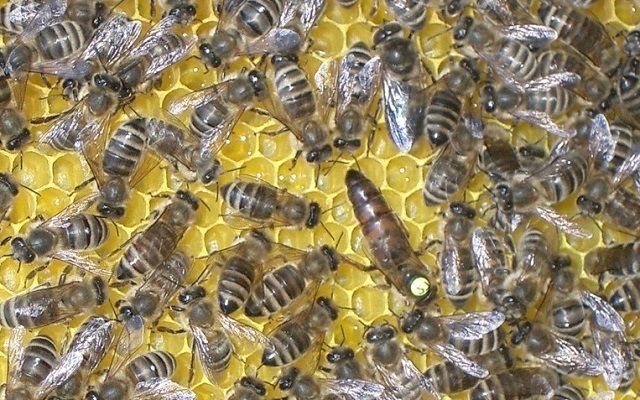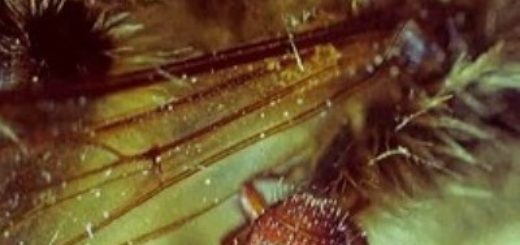Species of bees and their characteristics
Types and breeds of bees and their characteristics. A photo, video.

Uterus and worker bees honey bee species:
and - Carpathian: b - gray mountain Caucasian; in - Ukrainian steppe; g - the Central; A - Italian.
Species of bees formed under various climate conditions, as well as through intensive work of breeders.
That is why they are different in color, dimensions, long proboscis, aggressiveness, fertility of females, disease resistance and other characteristics.
Choosing a new breed of bees for his apiary, Many factors should be considered, because some of them will not survive in cold conditions, others will be very difficult initiatives to beginners in beekeeping.
It is also important to learn, as different species produce honey collection and prone they are to theft.
The following describes the main breed bees with photos and descriptions, these distinctive characteristics, allowing them to distinguish, such as size, color, ability etc..
Today beekeepers use a couple dozen species of bees, true, domestic apiarists used some of the most common among them, namely: Carpathian, krayinka, ʙakfast, Ukrainian, Woodland, the Central, Caucasian, bashkirska breed bees and other.
Carpathian bee
These insects “painted” in gray. proboscis has 6,3-7,0 mm, and uterus weight 200 mg, its fertility – 1800 eggs.
The advantages of these karpatok:
- peacefulness;
- pretty good winter hardiness;
- productivity;
- low roylyvist;
- Dry sealed honey;
- willingness to collect nectar in a fairly young age.
These bees also have some drawbacks, namely:
- stealing honey;
- the almost complete absence propolis;
- indifference to the wax moth.
Ukrainian steppe bee
For this type, as for other, typical gray cells and standard size proboscis.
Mother bees Ukrainian steppe cattle to breed 1,9 th. eggs, its weight – 200 mg.
Advantages:
- resistance to disease;
- peacefulness;
- hardiness;
- had roylyvist;
- Dry seal honey.
This species is the most versatile and easy to all, but only suitable for areas with temperate climates.
the Central bee
This breed of bees following characteristics: dark gray body, average proboscis (close 6 mm), uterus weighing about 200 mg, fertility – over 2,5-3 thousand eggs.
Due to living in harsh conditions, these insects have great endurance, they are resistant to major diseases, highly.
Honey consists first top family, and then only razplodnyh comb, seal consists of a dry type.
Among the shortcomings allocate increased aggression, demands of the beekeeper, tendency to escape the swarm.
Caucasian bee
Characteristics of this type of insects next: gray body, the longest proboscis (In average 7,2 mm), weight about females 200 mg, their fertility is only 1,5 th. eggs.
Found a spread in the Caucasus mountains. This bee collecting nectar even capable of such deep flowers, as clover.
The peculiarity of the rapid pereklyuchani flowers from one type to another. Insect cells initially fills, and only then proceed to the shop of.
Among the special features of this type of release following: if there are many honey plants, almost all the work on insects fly nectar tricks, leaving brood development to chance.
In this breed there are other unique features:
- before all this kind of flies out of the hive and returned late at night;
- they work starts even at very low temperatures;
- Bees fly during fog, and even in the rain;
- honey sealed the type of wet seal.
Among the shortcomings: tendency to steal honey, aggressiveness, lower hardiness, low resistance nozematozu and toxicity.
Bakfast

Weight: 110-120 Working bees mg, unfertilized uterine weight – 190 mg, and eggs – 210 mg.
Egg females around 2000 eggs a day. The average length of the proboscis, within 6,5-6,8 mm.
Aggressiveness: These bees are peaceful nature, because beekeeper can inspect hives without a chimney and protective mesh.
Winter hardiness: low. Need extra insulation for the winter hives.
Floromihratsiya: insects quickly switch from one mode to the other honey plants.
Color: color bee – dark yellow, almost brown. Feet bright black, wings – light, with a pale brown tint. The body has a small mohnatist.
Krayinka

Krayinska bee (Avenging) – view, launched in Yugoslavia. This silver-gray insects, proboscis which is about 6,5 mm. Uterine weight 205 mg and can give 1,4-2 th. eggs.
This type of, essentially, embodied the best qualities of the Caucasian bees and karpatok.
So, krayinka has high winter hardiness, peacefulness, low roylyvist, departs early work, that allows you to process first honey plants.
Prefers first delay of honey rozplodnu, and after – in store.
Wintering bees in krayinskyh is quite easy as the full, so even in inferior families.
Honey used them in small amounts. This species has been bred specifically for Central Europe, in which the minimum number of honey plants, and winters are often severe.
Among the negative features of isolated small produce propolis.
Italian bee
These bees are golden yellow. Proboscis, as in krayinky, a standard size, but his surprise cancer fertility – close 3,5 thousand., This is the highest.
Advantages of this type are:
- resistance to disease;
- peacefulness;
- no roylyvosty;
- collecting honey from nectar rich honey plants;
- many wax;
- resistance to moth, foulbrood.
Shortcomings: low resistance to cold, lack of toxicity resistance, nozematozu, thievish.
Species of bees and their differences can also explore using additional literature and video.
This is not a complete list of used apiarists bee species.
There are other types and breeds of bees, but, usually, they are used less frequently, not very convenient for the classic bee.
After all, when used in the district of the same insect, easier to gain experience and maintain a common cause.
Also keep in mind, how different types coexist, because some of them may conflict with one another with mutual loss for beekeepers.



